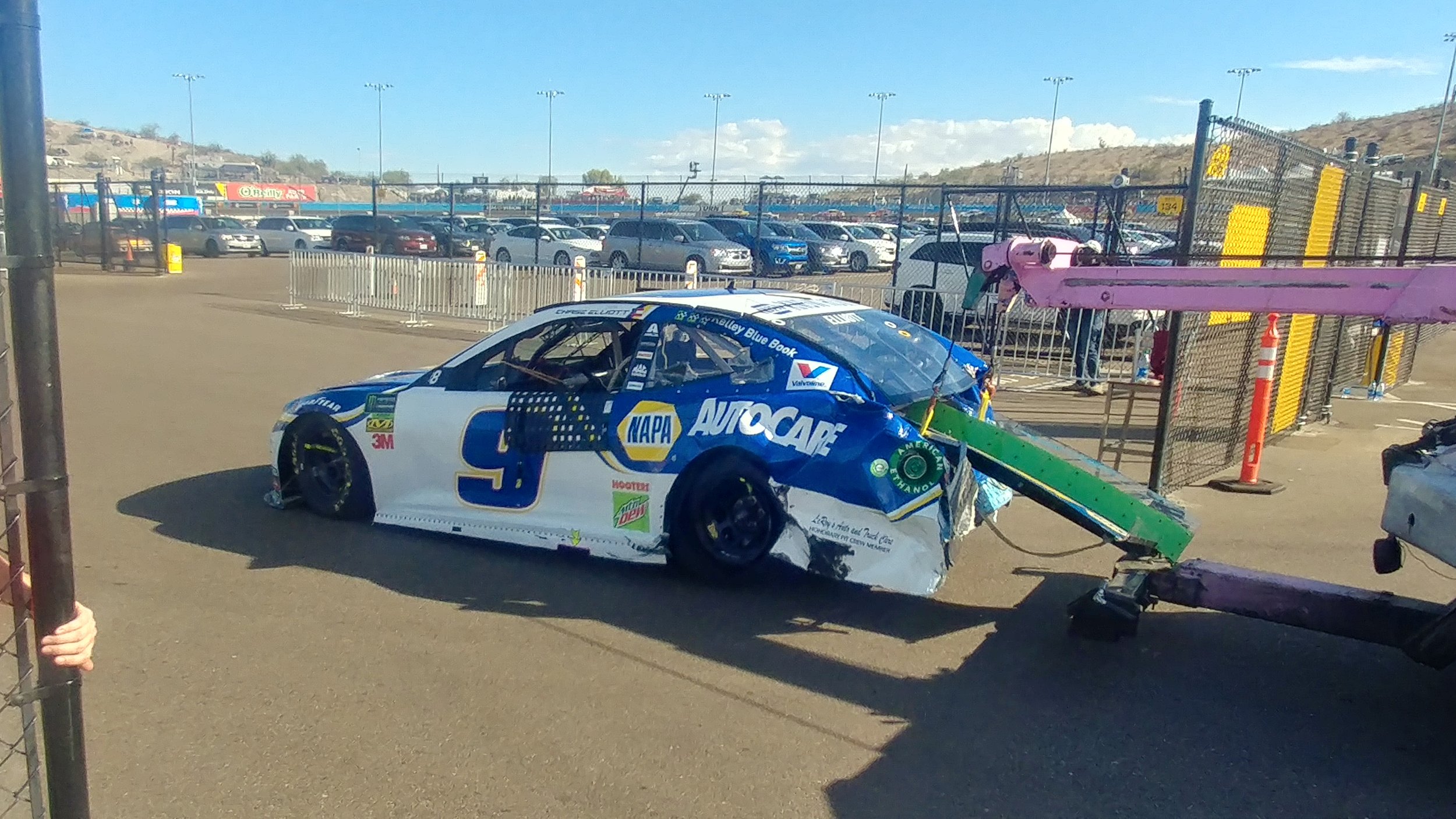
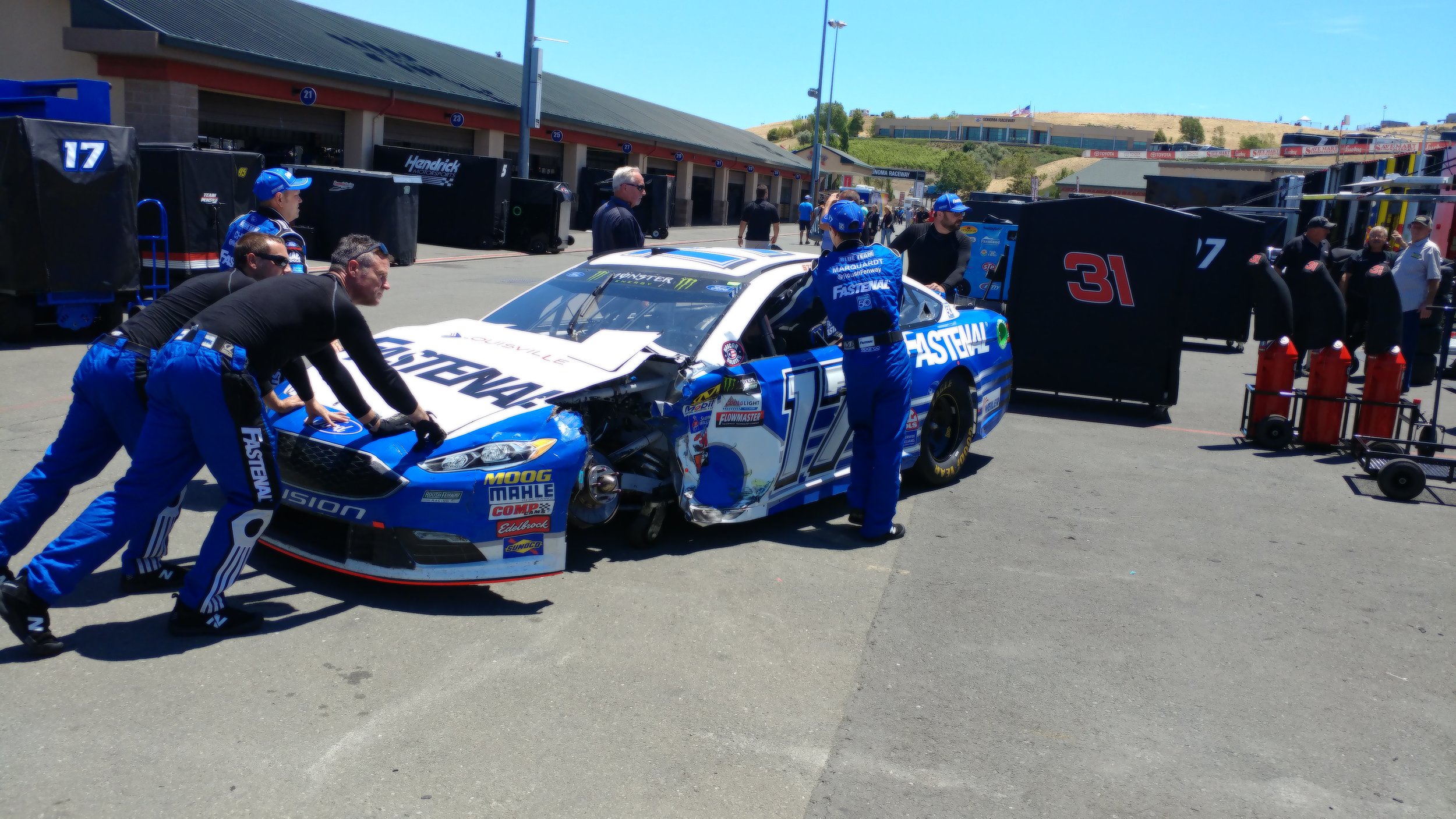
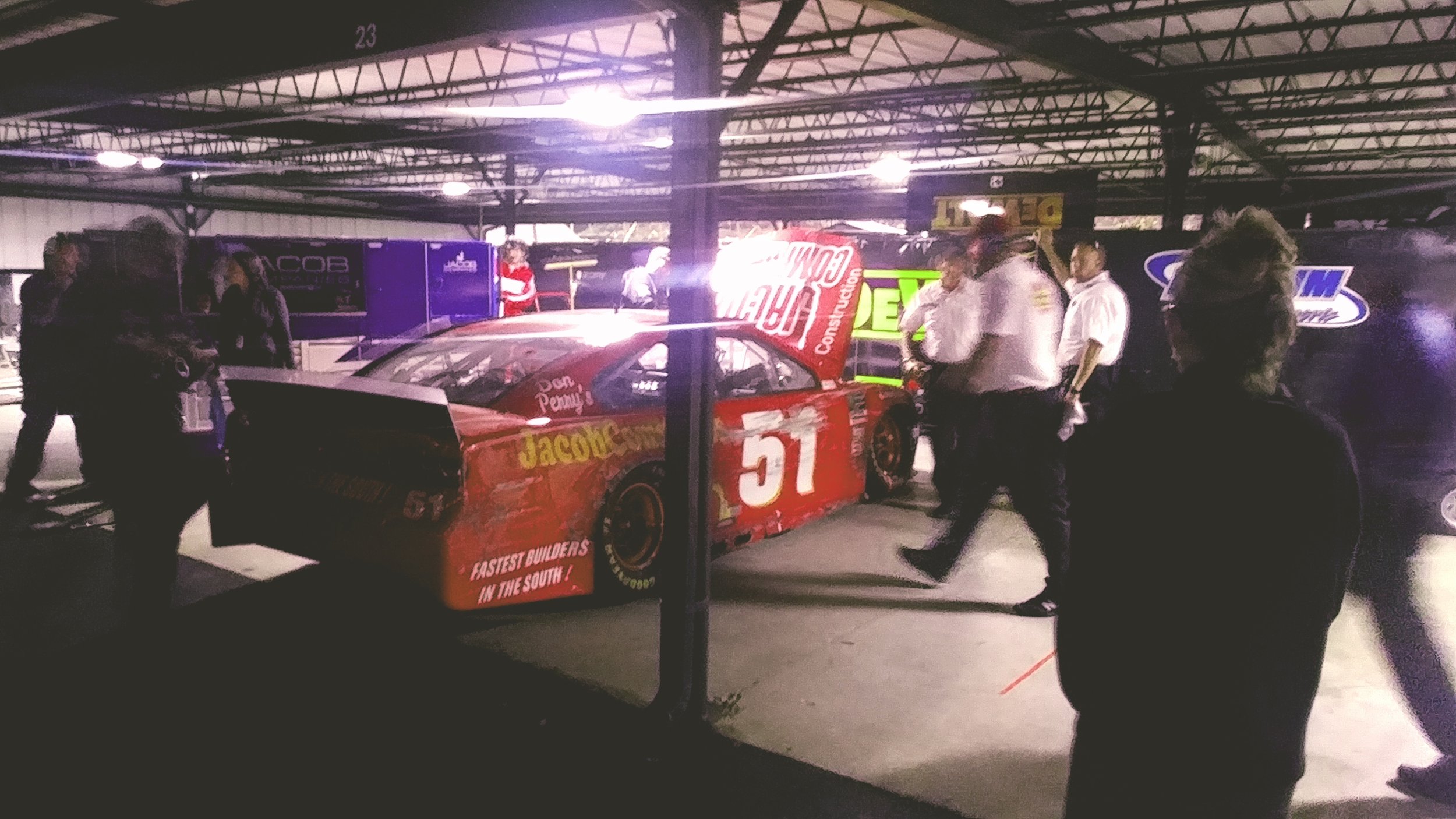
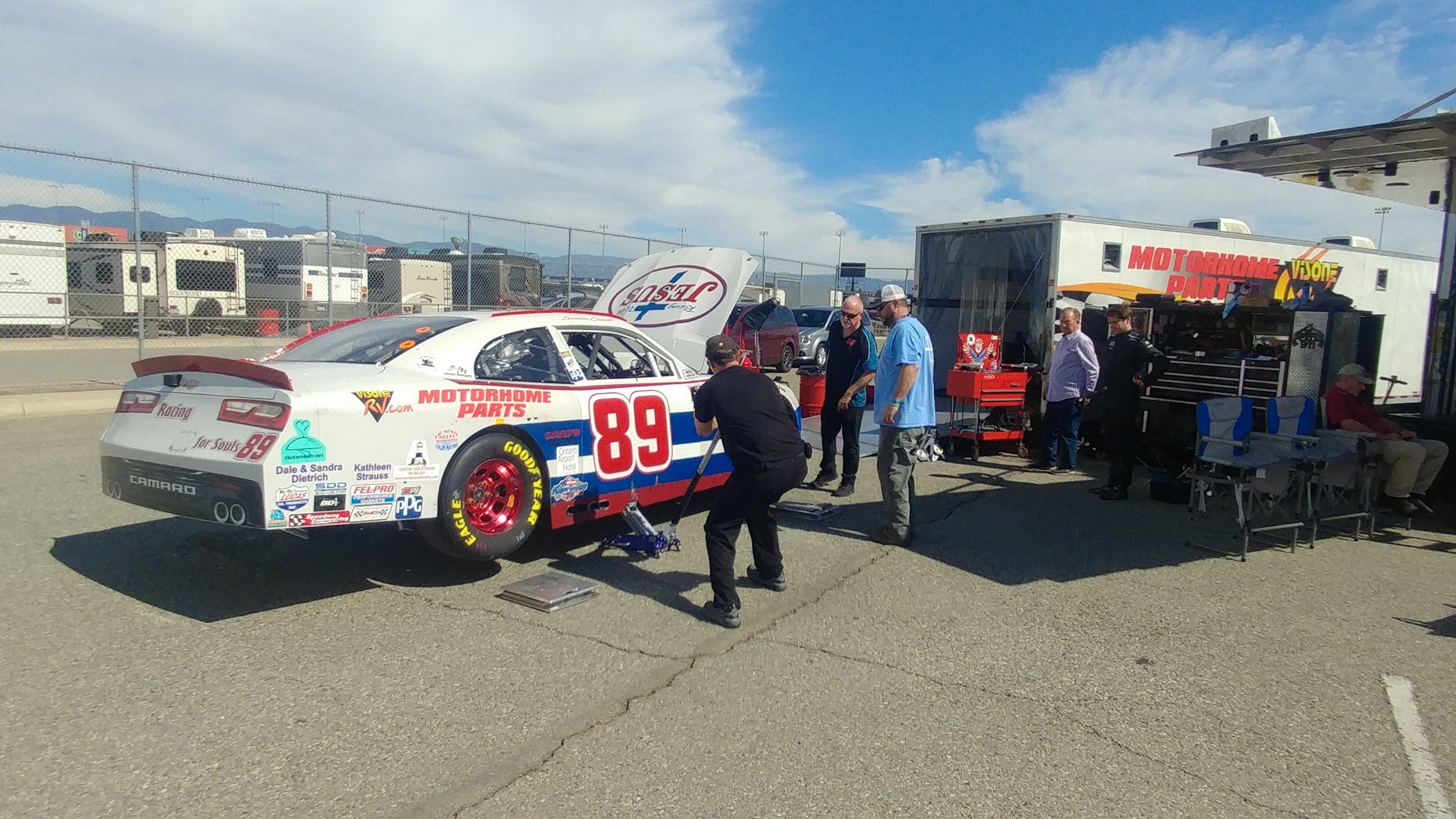
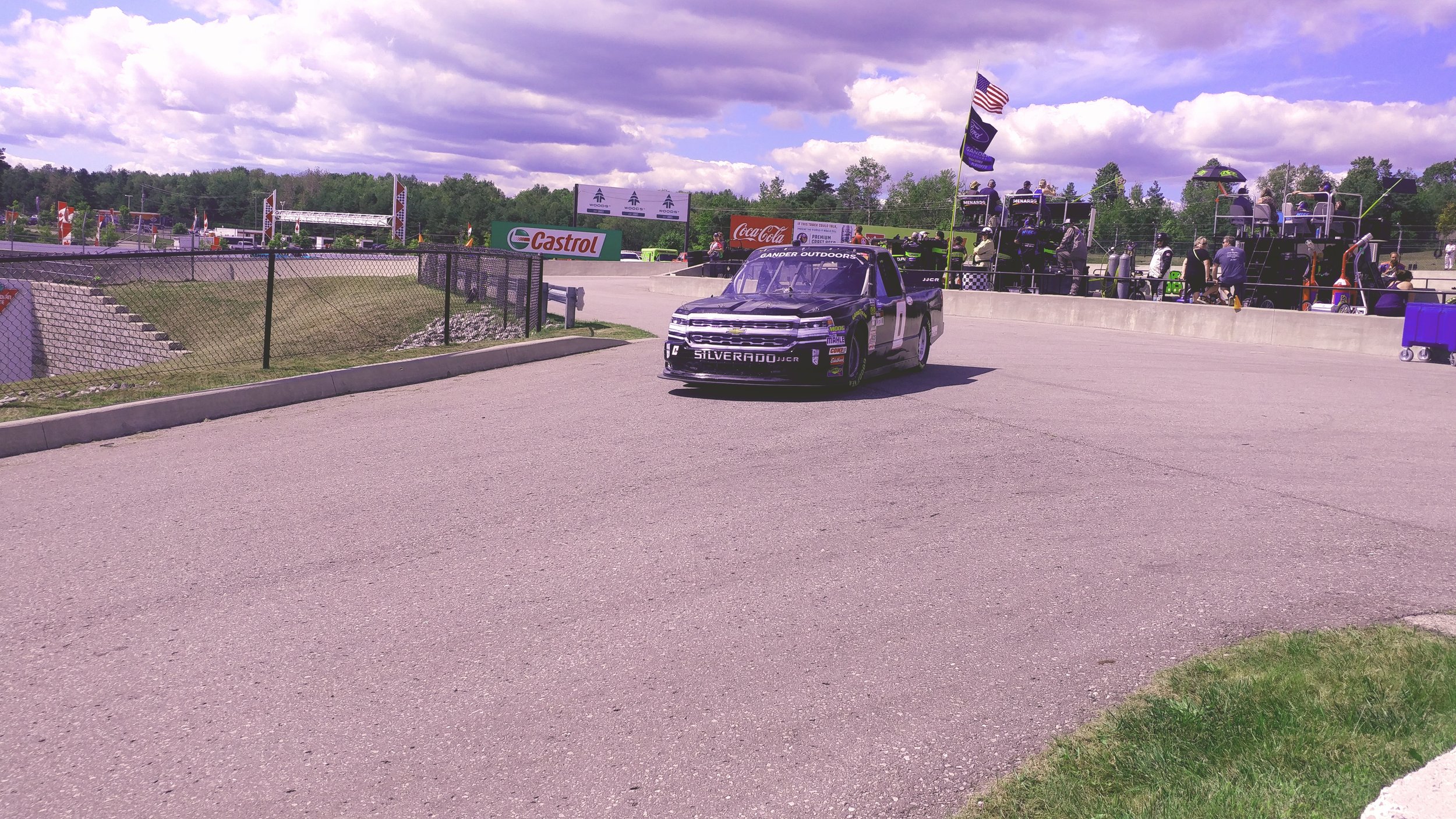
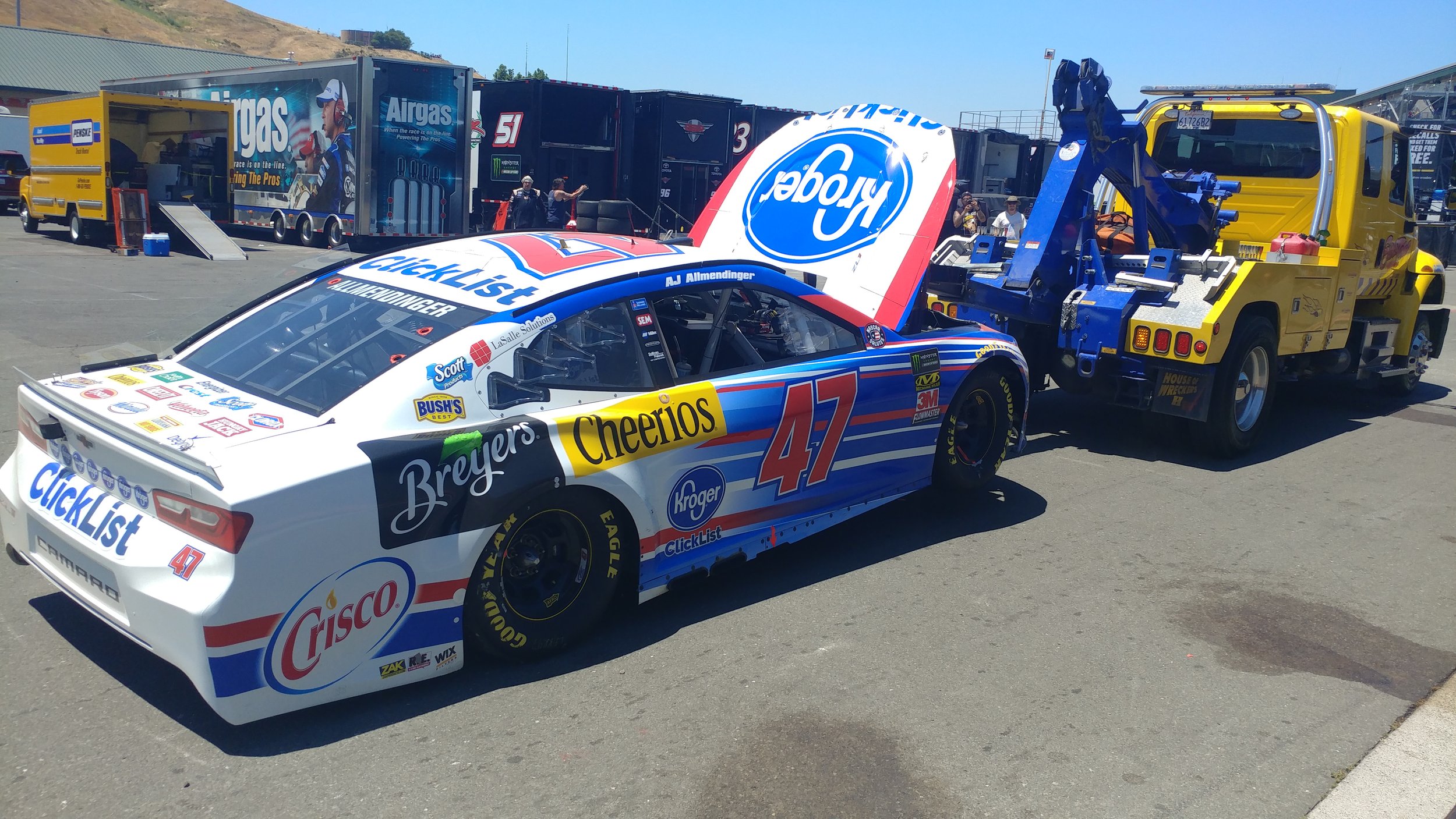
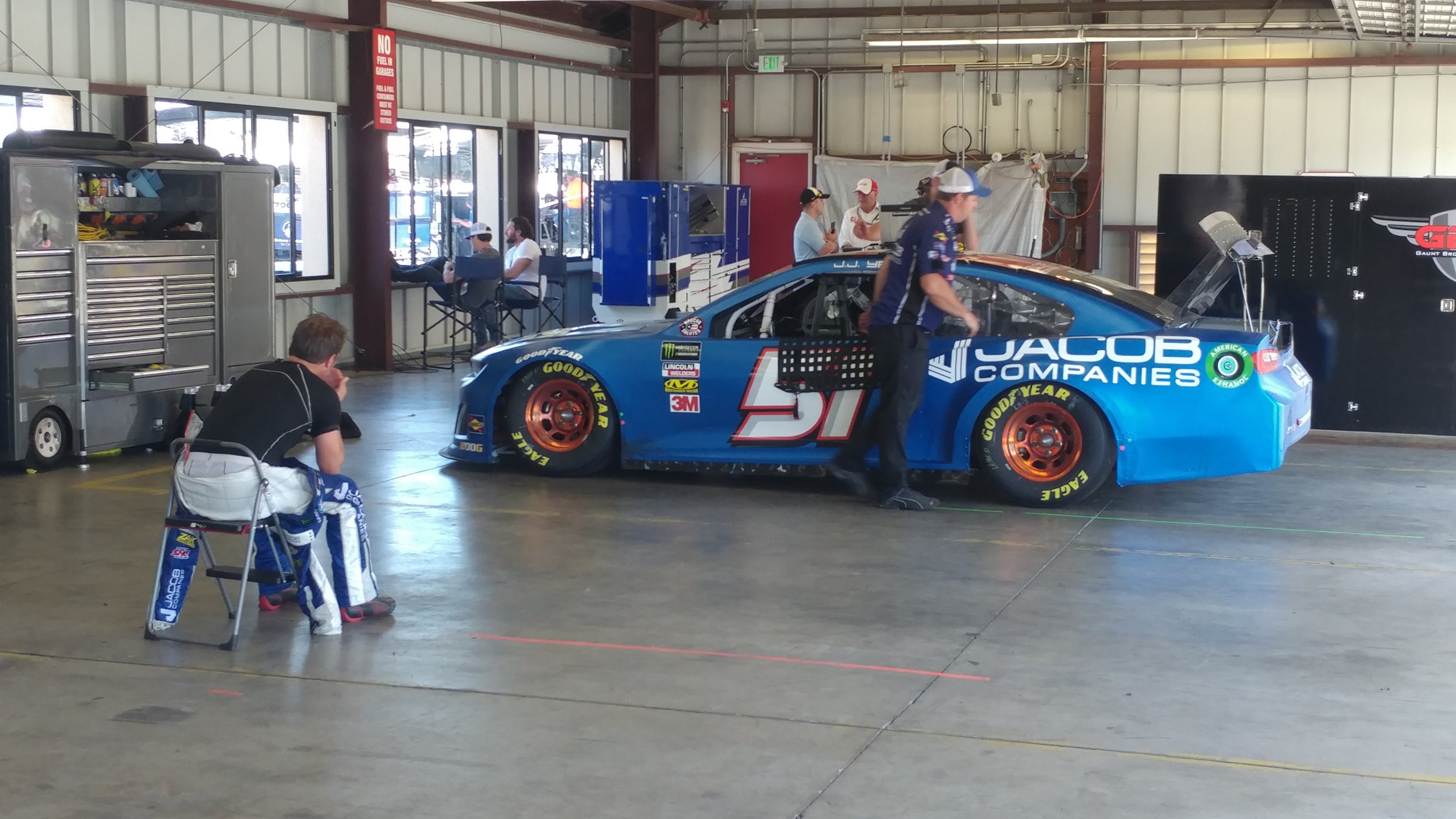
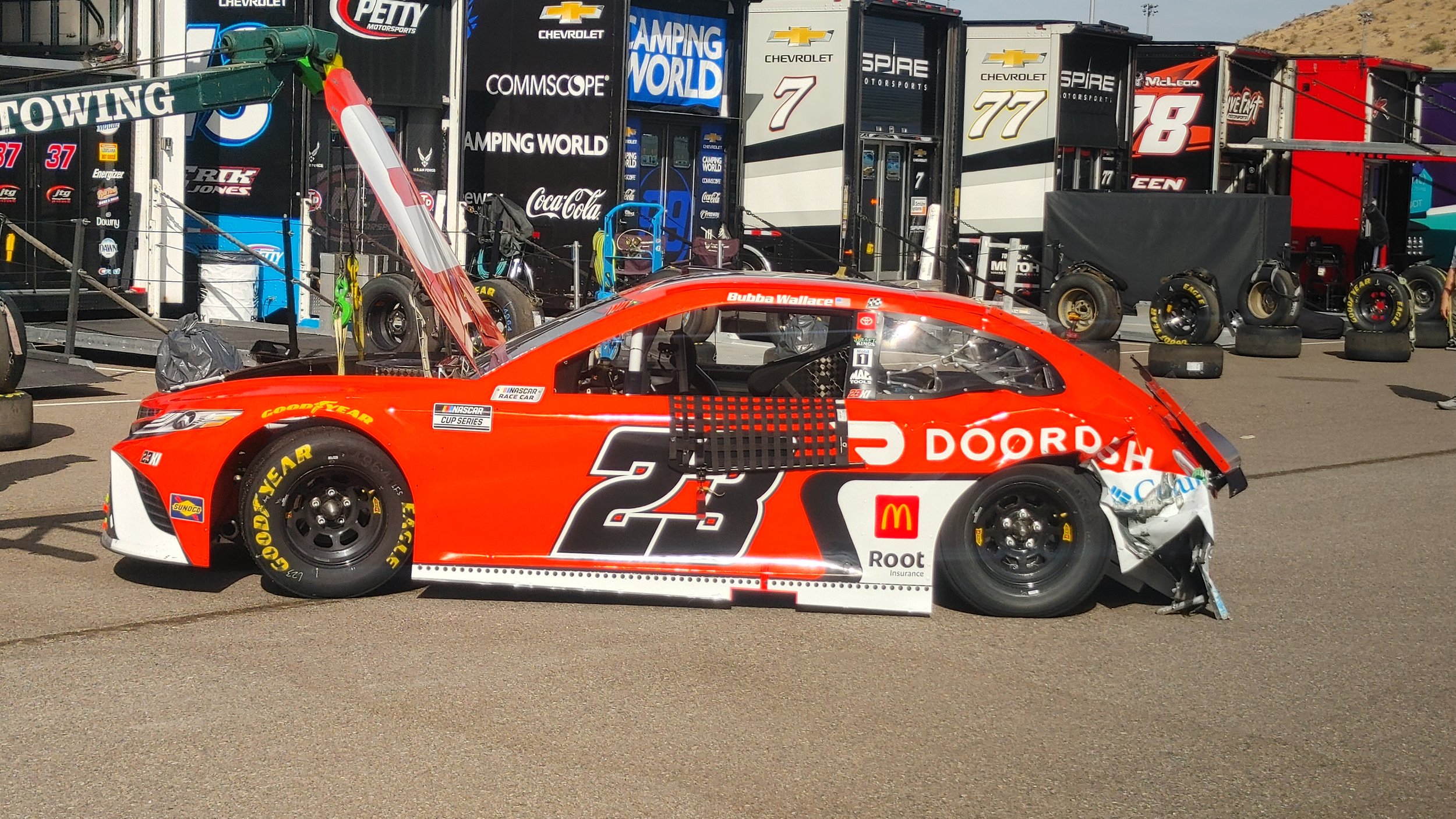
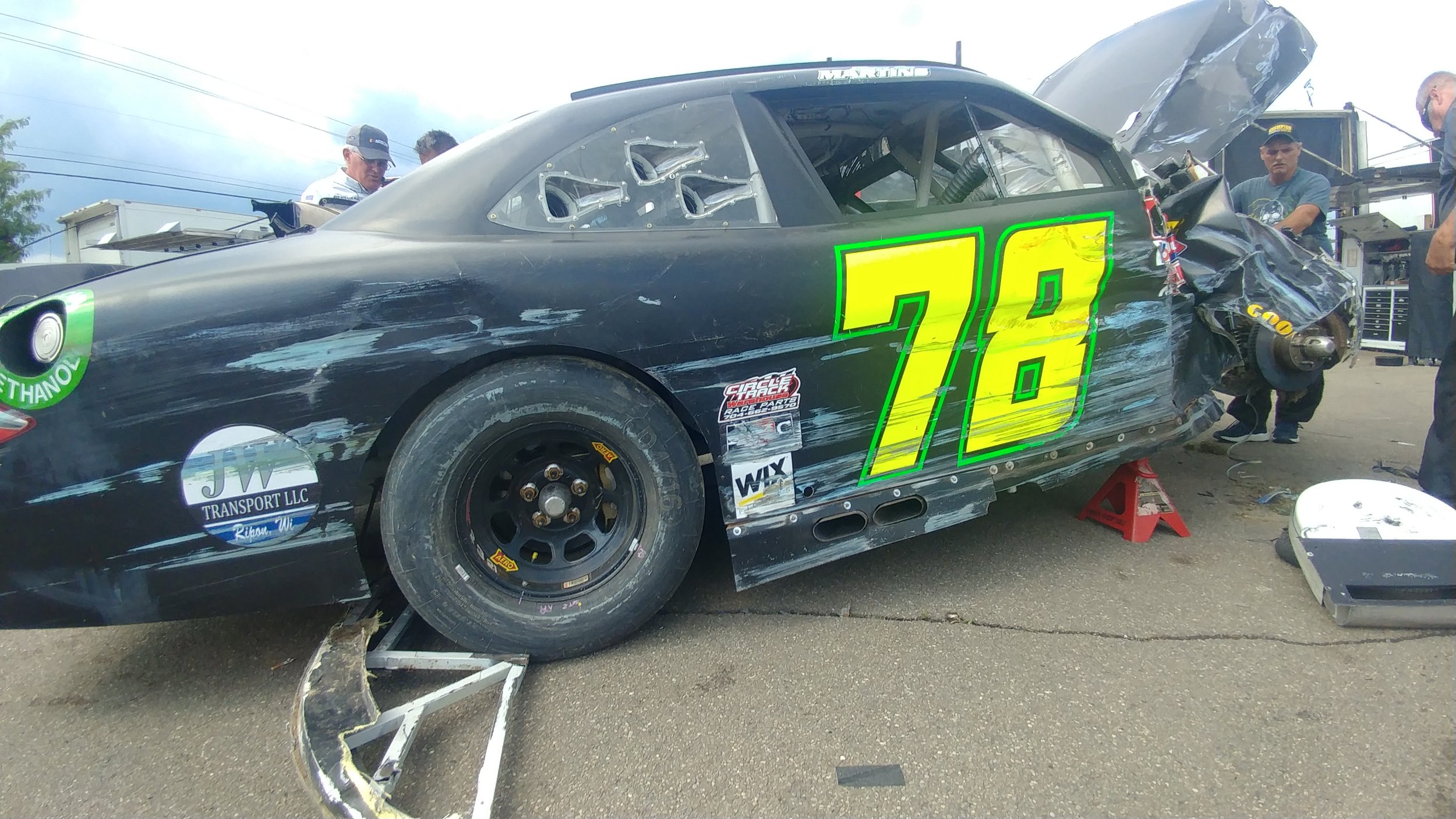
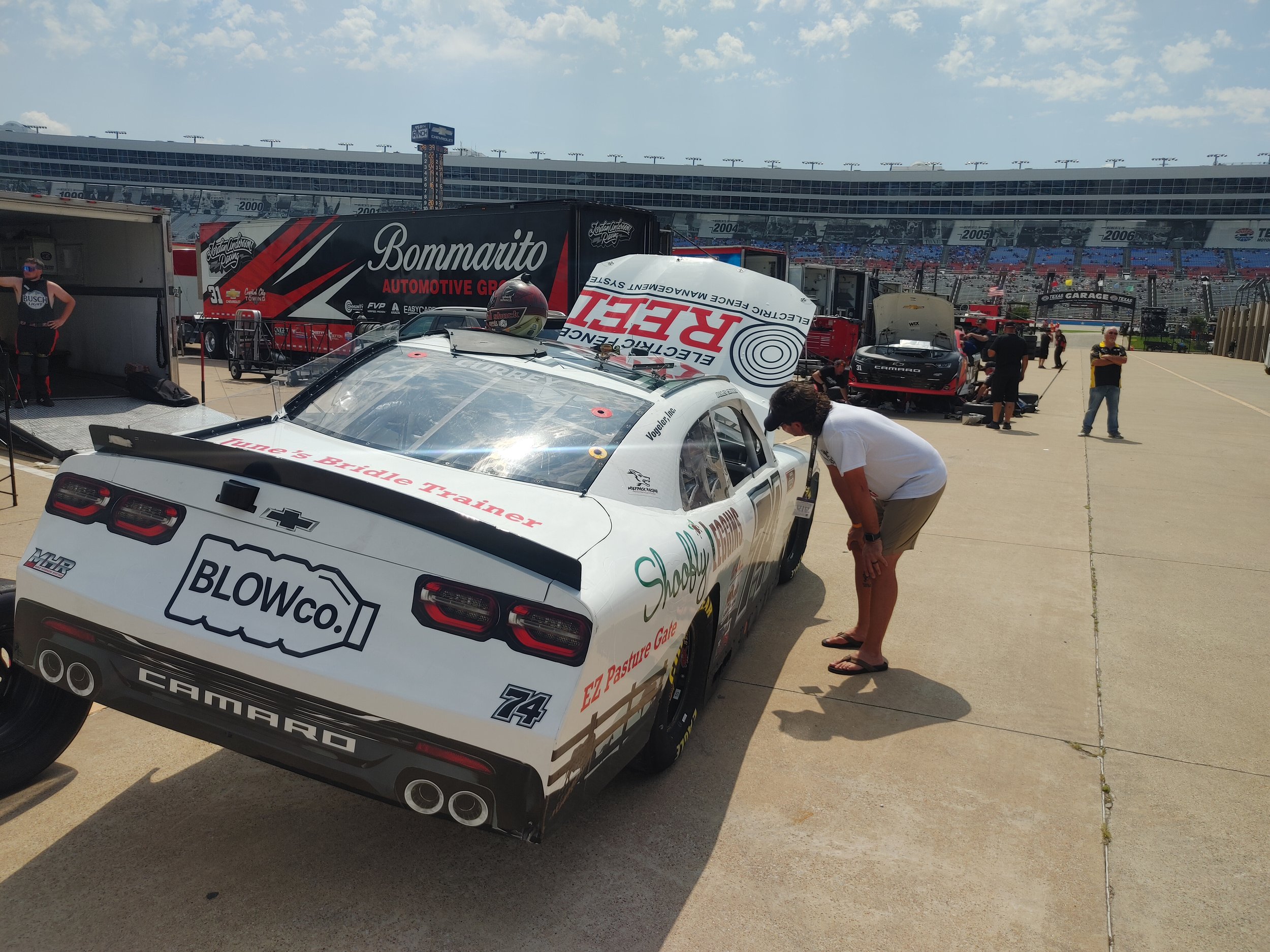
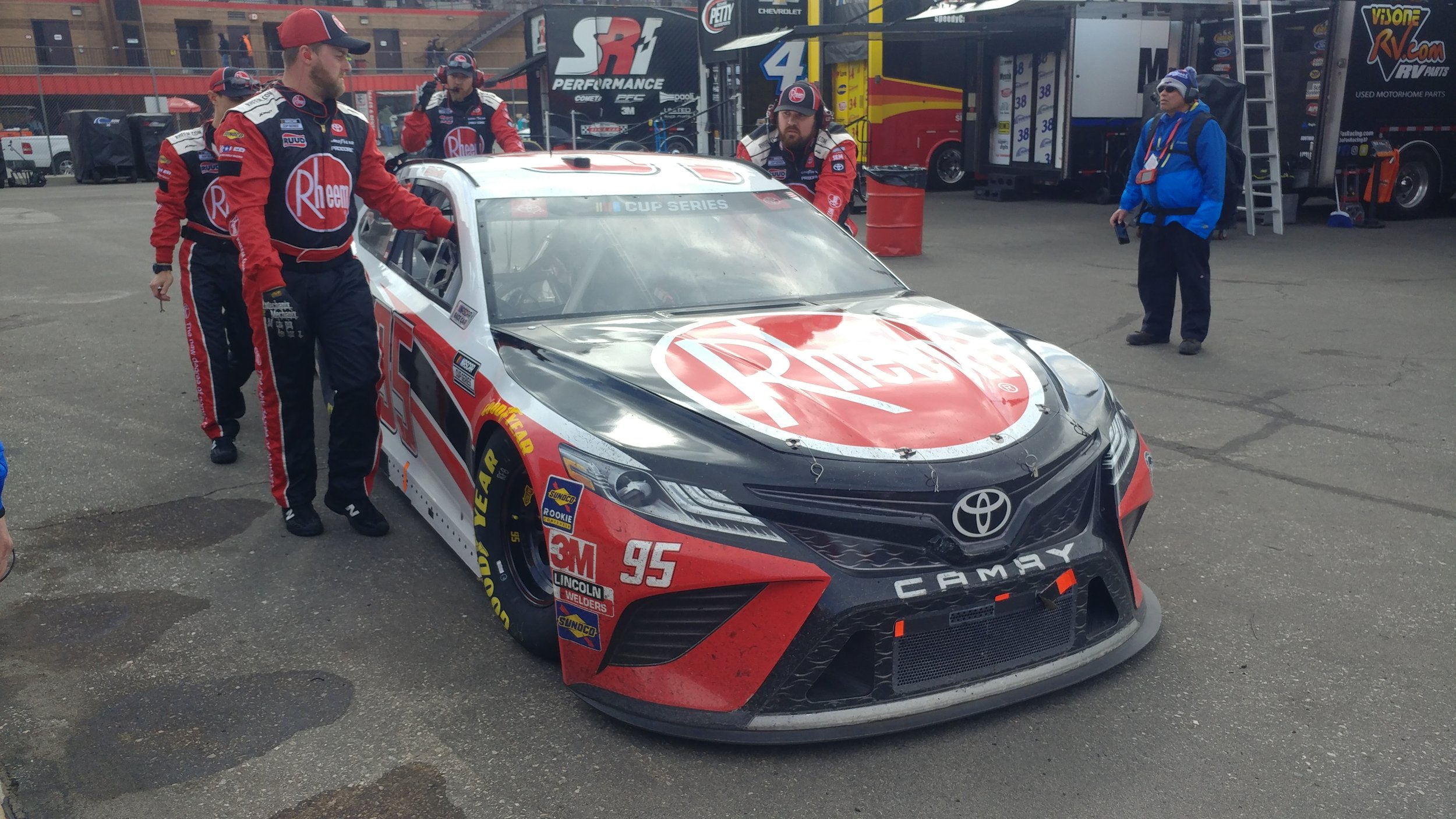
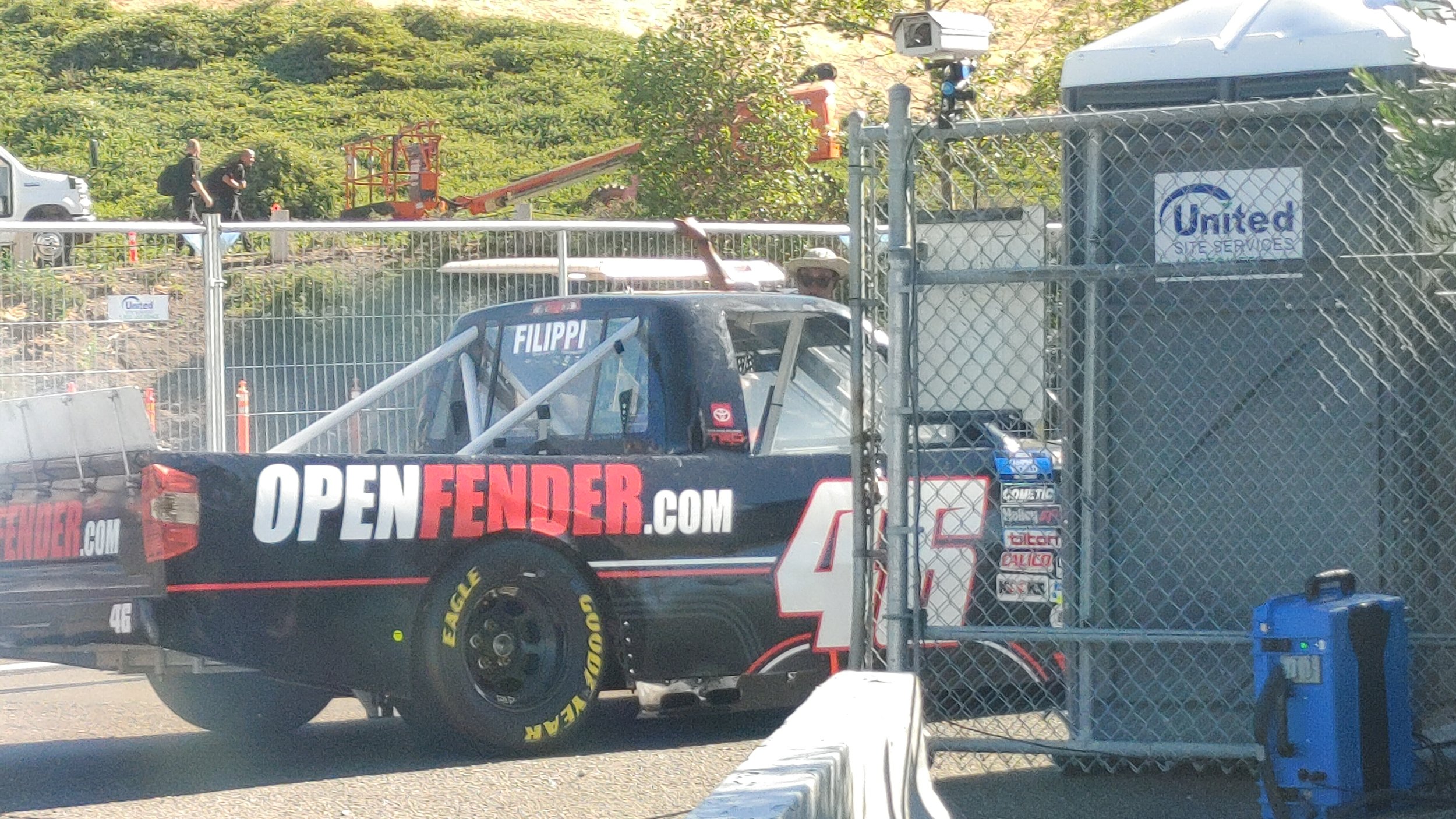
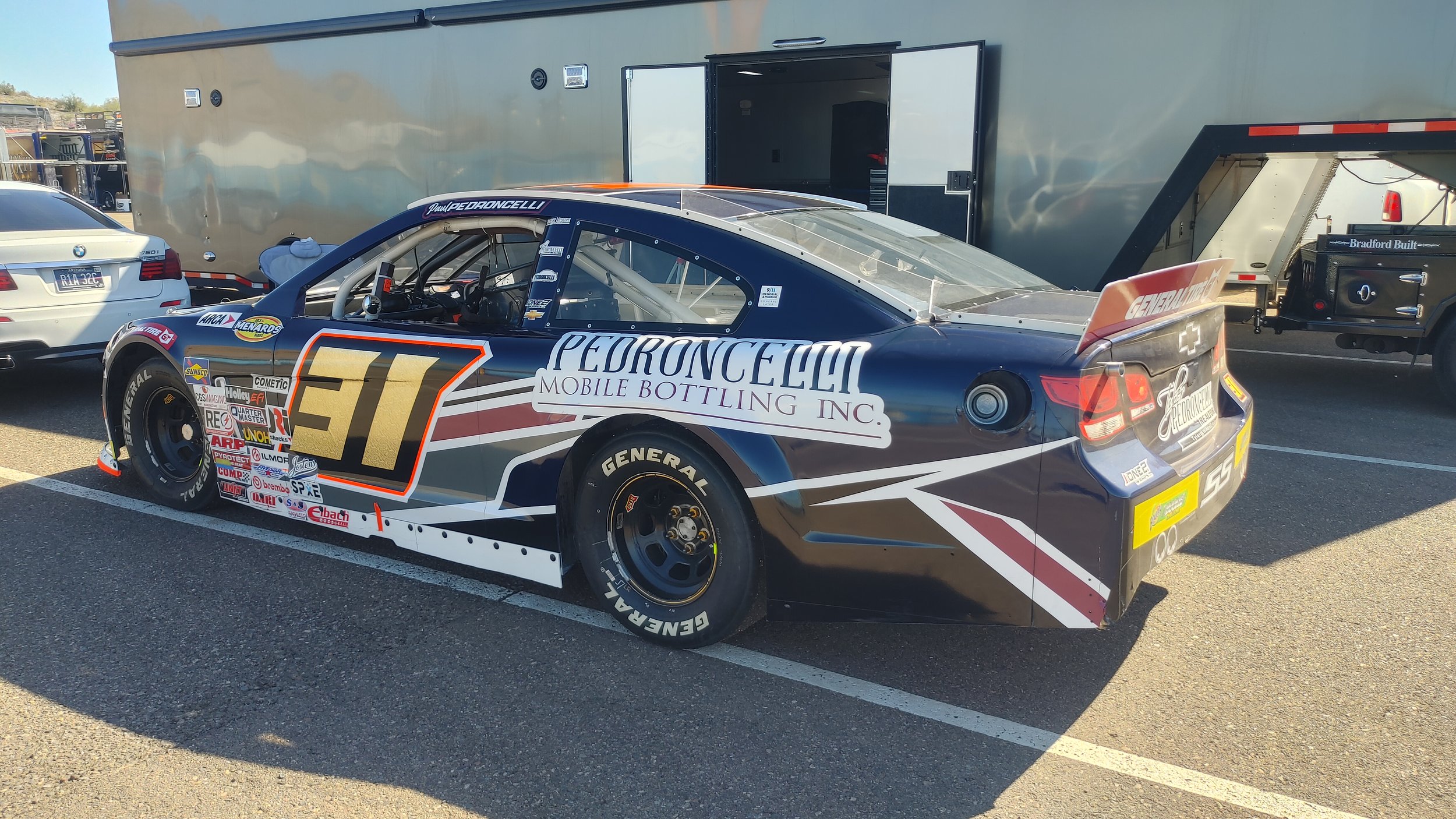

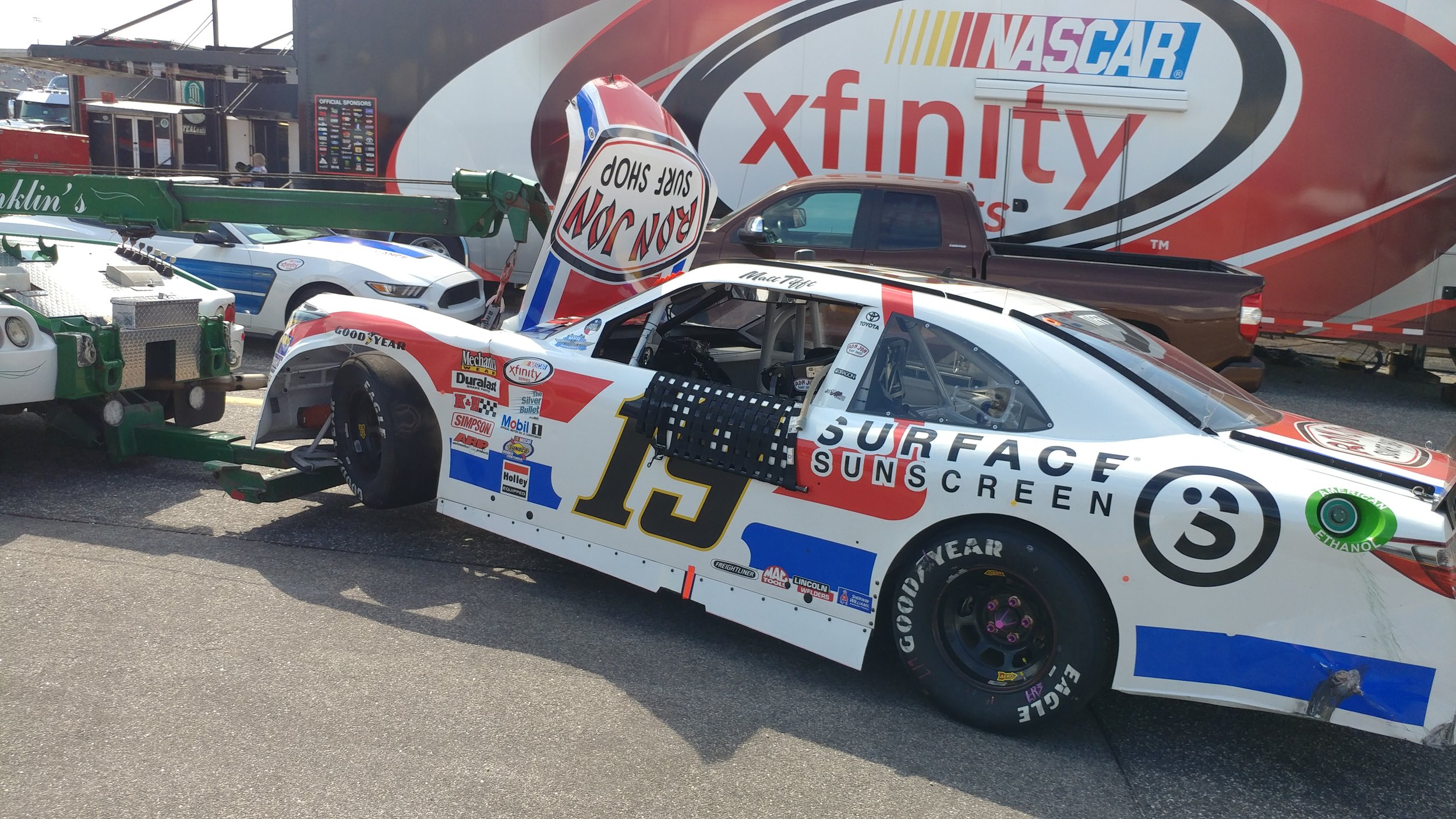
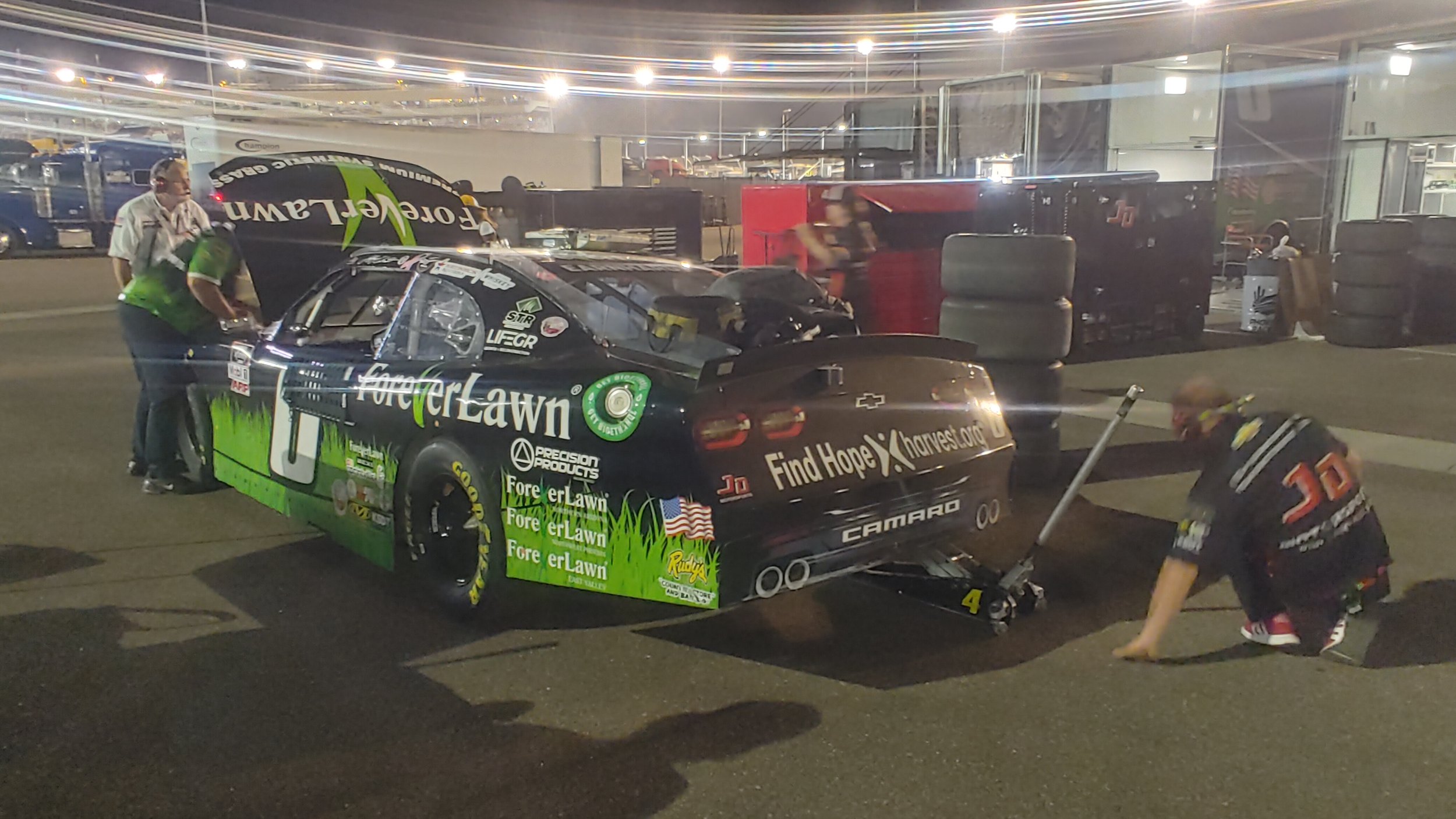
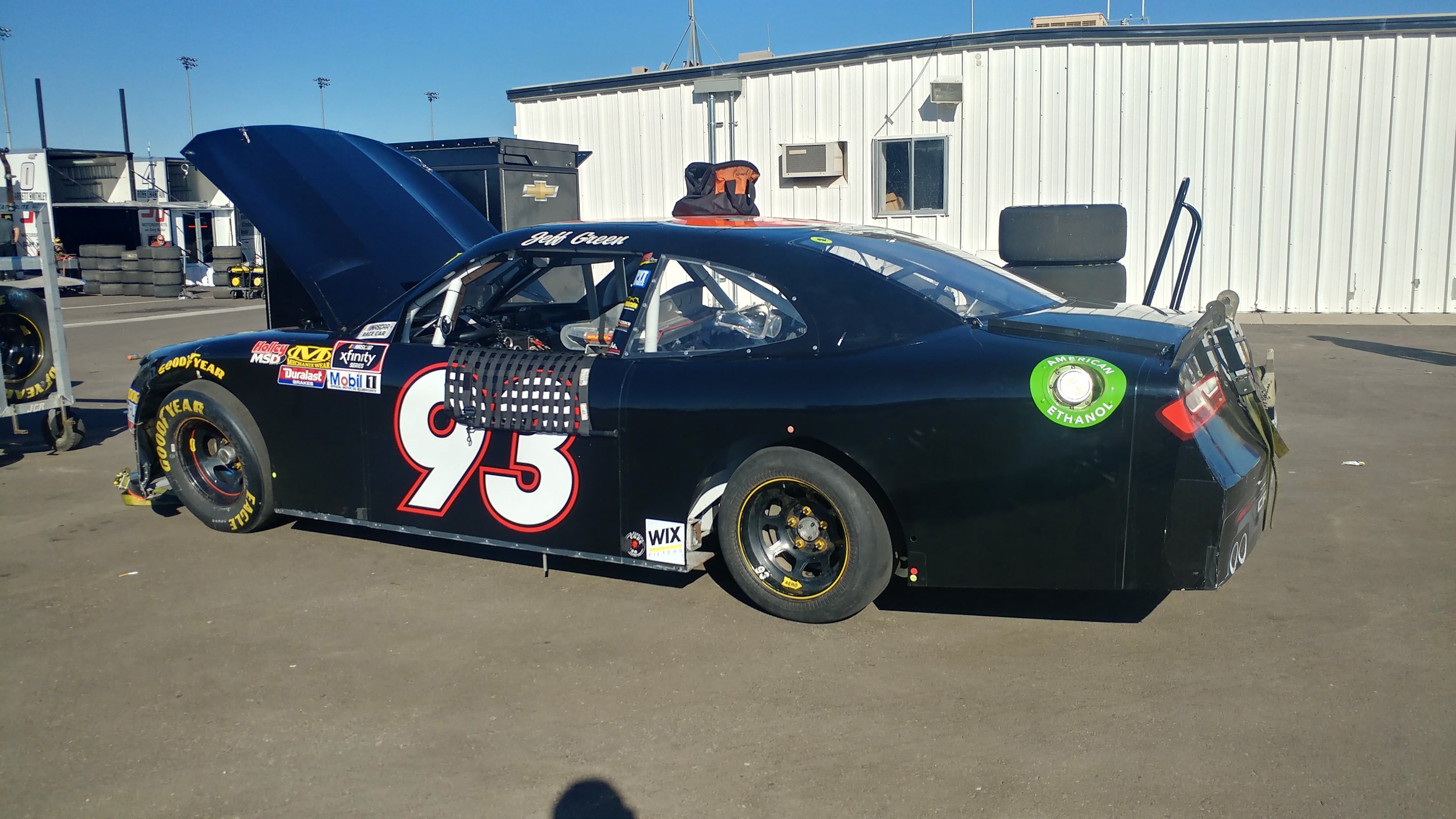
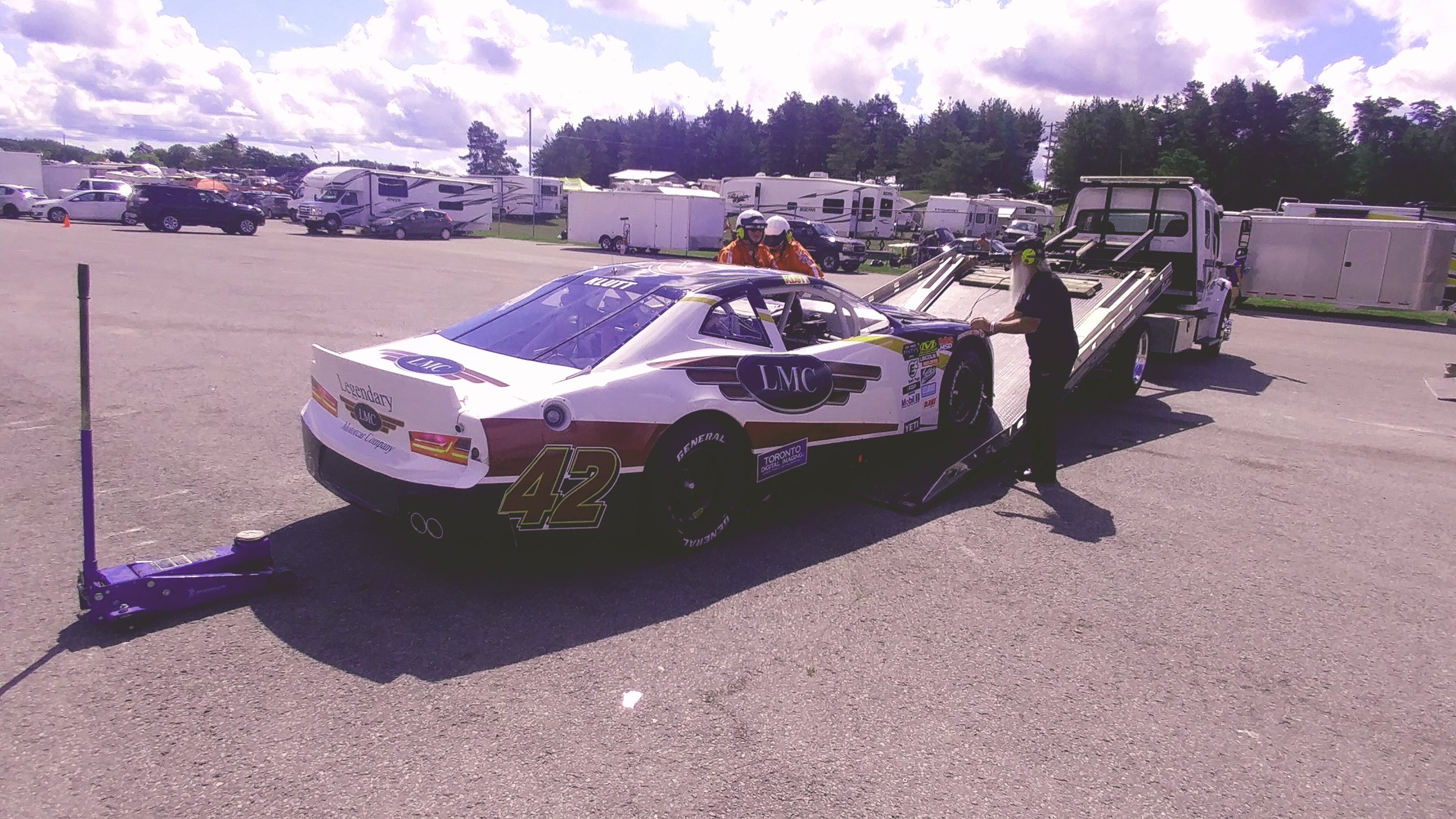

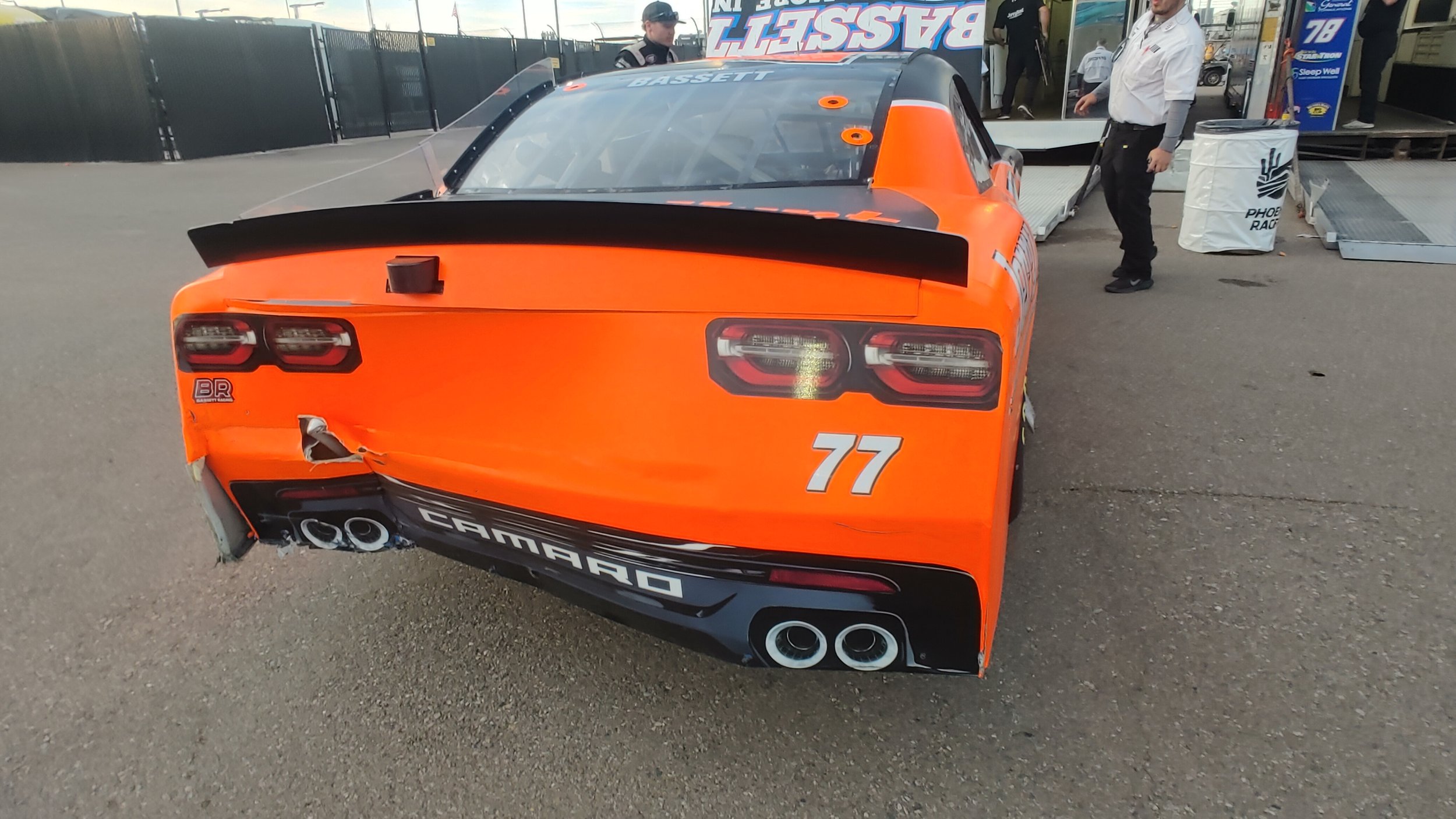
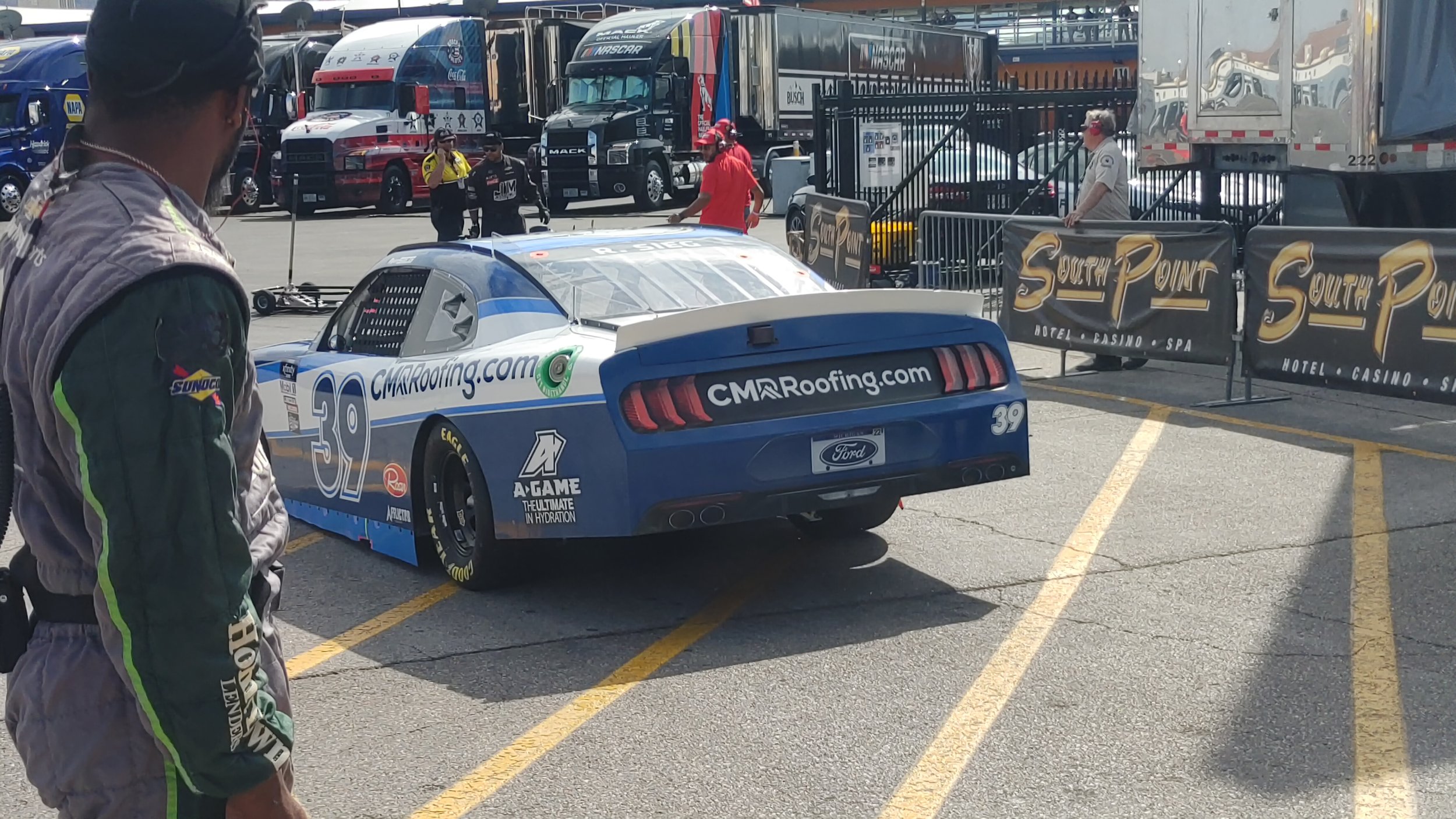
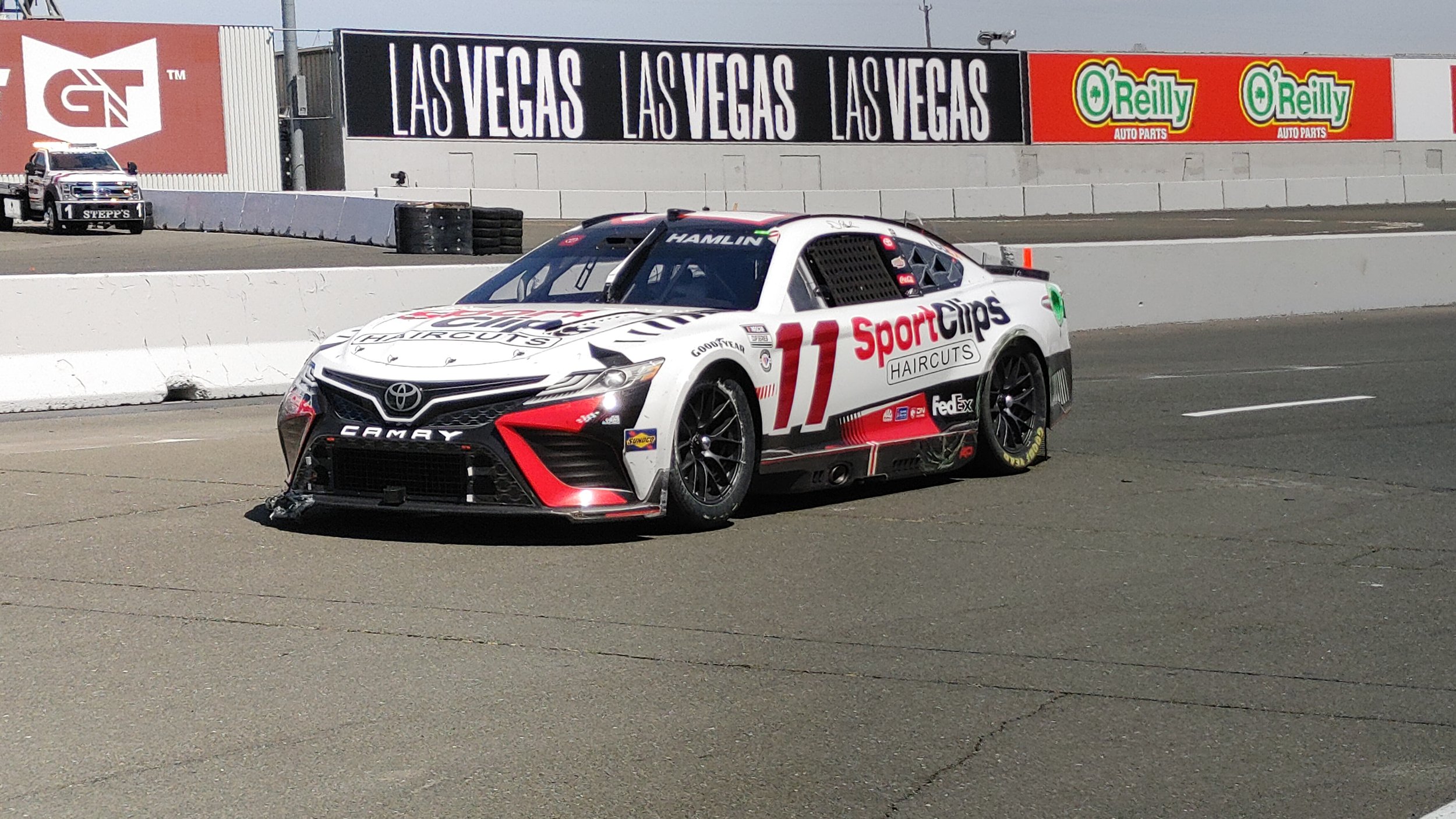
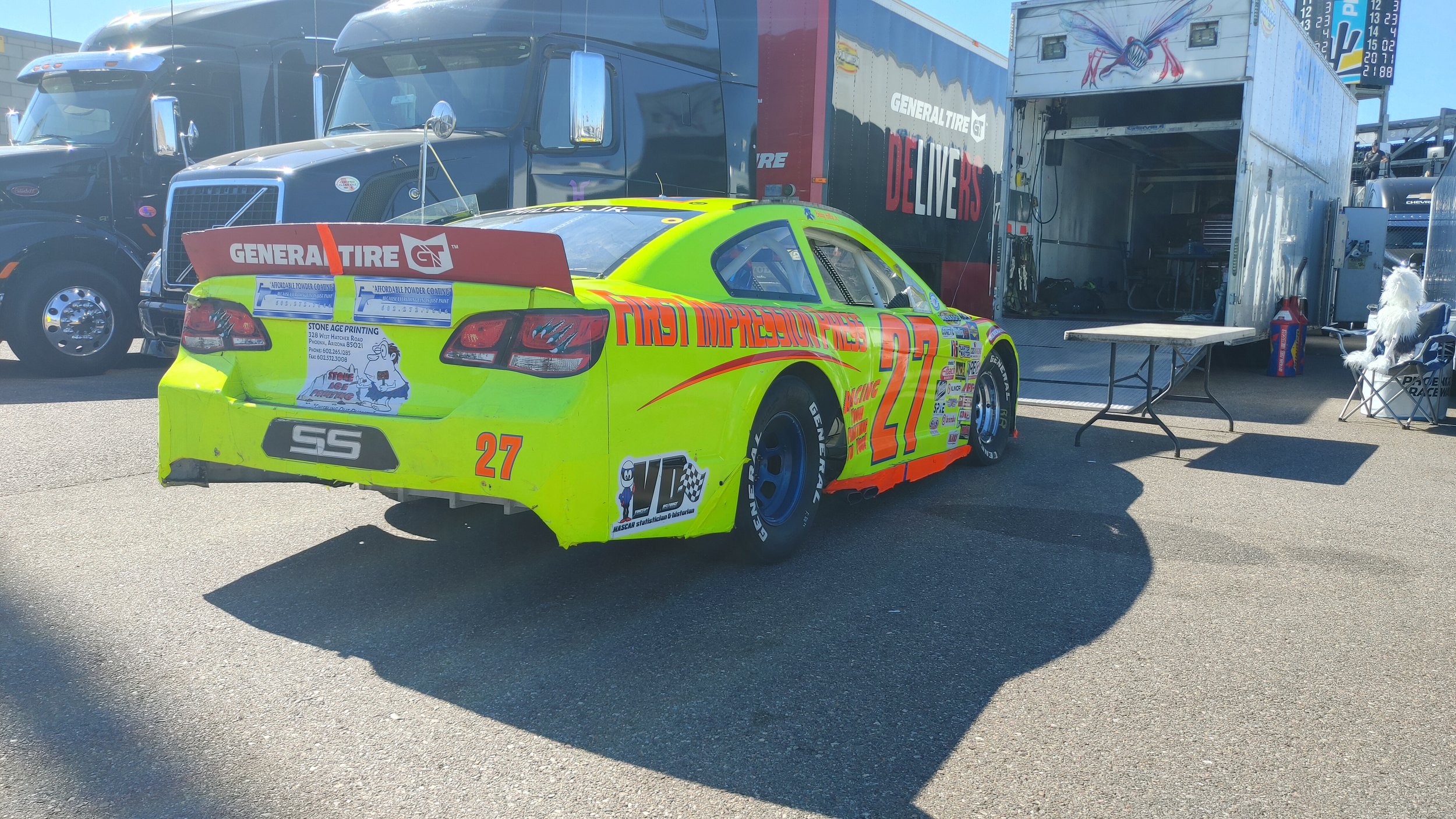
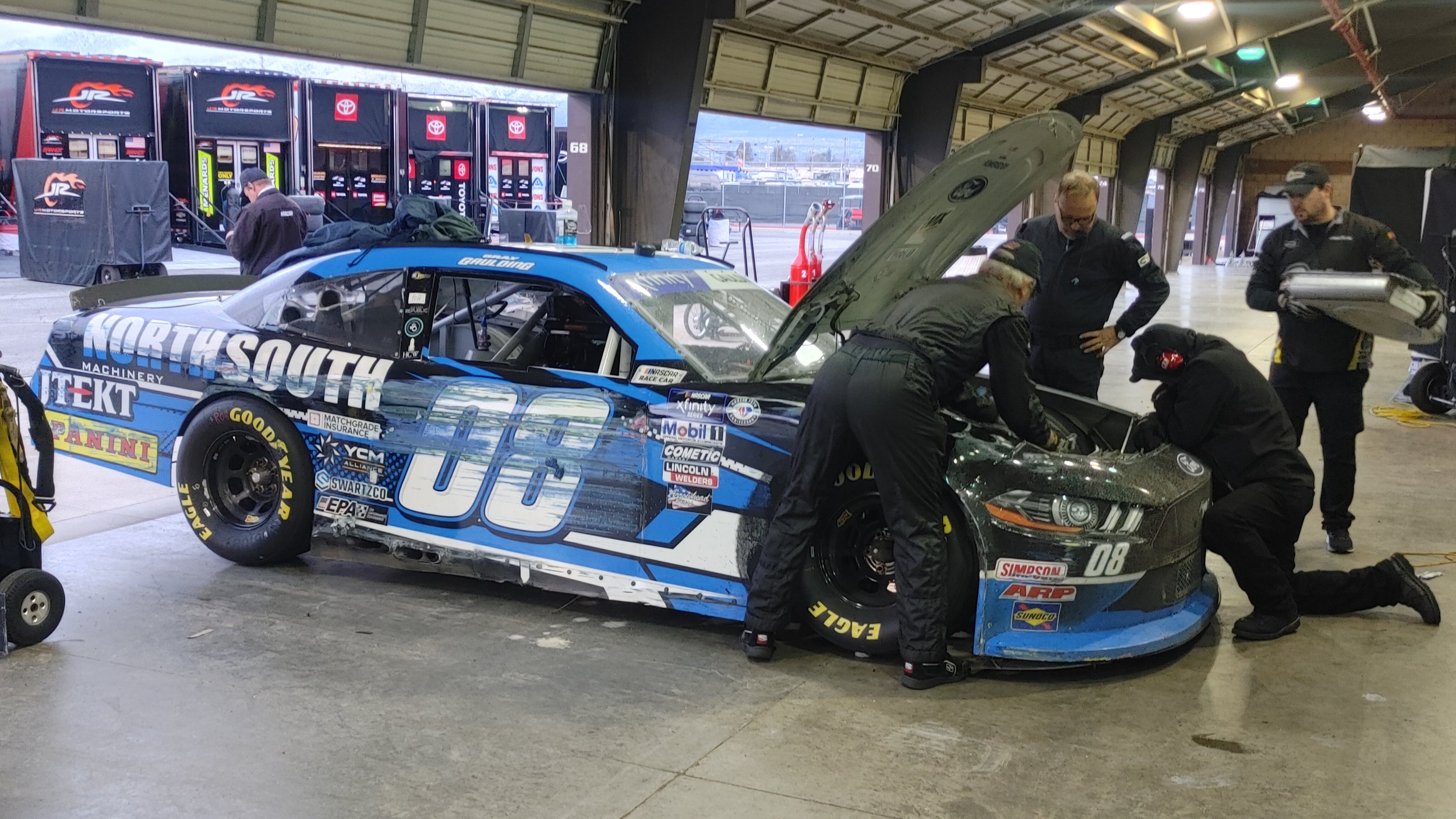
. . .
LASTCAR NEWS
. . .
RYAN BLANEY BITTEN BY DARLINGTON'S TURN 2 WALL
. . .
EXPLOSIVE DRIVE SHAFT FAILURE ENDS RYAN ELLIS' RUN AT DARLINGTON
. . .
KYLE BUSCH WRECKS DURING BATTLE FOR THE LEAD ON LAP 2
. . . LASTCAR NEWS . . . RYAN BLANEY BITTEN BY DARLINGTON'S TURN 2 WALL . . . EXPLOSIVE DRIVE SHAFT FAILURE ENDS RYAN ELLIS' RUN AT DARLINGTON . . . KYLE BUSCH WRECKS DURING BATTLE FOR THE LEAD ON LAP 2
“Bringing Up The Rear Since 2009”
40 drivers start a NASCAR Cup Series race.
38 fill the grid in the XFINITY Series.
36 take the green in Trucks.
Yet, even when the field is short, only a handful of these stories are ever told.
The mission of LASTCAR.info is to fill in these missing pieces one week at a time, especially regarding the least-covered racers in motorsports - the last-place finishers.
Since 2009, LASTCAR.info has covered the untold "race" for the most last-place finishes in NASCAR history - and, in doing so, continues to chronicle the trials and triumphs of those who race for something as meaningful as victory: survival.
New NASCAR articles and statistical updates are added following each NASCAR Cup, XFINITY, and Truck Series race weekend, plus driver features, historical retrospectives, editorials, and more.
PHOTO: Luis Torres, @TheLTFiles
LASTCAR STATISTICS
LASTCAR Films on YouTube
PLUS be sure to tune in to “Behind The Wall,” my weekly post-race livestream, which starts approximately 15 minutes after the conclusion of each Cup Series race!
AVAILABLE IN PRINT, EBOOK, & AUDIOBOOK
On August 11, 1991, 52-year-old John Delphus “J.D.” McDuffie lost his life when he crashed during the opening moments of a race in Watkins Glen, New York. But there was much more to the man than that moment, and more to that moment than is widely known.
On February 18, 1990, Derrike Cope scored perhaps the greatest upset in NASCAR history when he took the lead on the final lap of the Daytona 500 after then-leader Dale Earnhardt blew a tire. Some considered his win a fluke, but few knew how much it had taken him to reach Earnhardt’s bumper that day.
Want your copy signed? Stay tuned for details on my next book signing, OR send me an e-mail at brockbeard@gmail.com for details.
Dig deeper into LASTCAR History!
WANT SOME LASTCAR MERCH?
Pick up your own LASTCAR hat, or get some stickers to show your friends which part of the field you follow!
CONSIDER JOINING OUR PATREON
Get advance access to new videos I post on my YouTube channel, plus those I narrate for NASCARMAN History, and also receive members-only benefits, including your name on our popular door magnets that are awarded to one lucky Patron after each race!
-

Brock Beard
FOUNDER & EDITOR-IN-CHIEF
Born and raised in Northern California, Brock has been following NASCAR since 1991. From the outset, he’s enjoyed the sport’s smaller teams and lesser-known drivers, beginning with the road course specialists at his home track at Sears Point. He founded LASTCAR.info in 2009 with statistics he compiled on NASCAR’s last-place finishers, and has since updated them weekly. He’s now a twice-published author, completing the biographies of both J.D. McDuffie and Derrike Cope, and also compiles NASCAR history videos on YouTube.
-

William Soquet
STAFF WRITER
The 2024 season marks William Soquet's seventh as part of LASTCAR.info. During that time, he has covered everything from the NASCAR K&N Pro Series to the ARCA Menards Series to IndyCar. William is finishing up his communication major at UW-Green Bay with emphasis in public relations and organizational communication. He is a former contributing writer to The Press Times newspaper in Green Bay and serves as editor of HomeRoom Show Choir.
-

Ben Schneider
STAFF WRITER
Originally from Delaware and now living in Massachusetts, Ben joined LASTCAR.info in 2021 as a guest contributor covering the ARCA Menards Series West. He was promoted to Staff Writer in 2023 and has since expanded his coverage to all three ARCA divisions. Ben is also a contributor to GRID Network, a motorsports media outlet where he hosts the GRID Live Encore podcast every Monday night, and is a frequent panelist on other GRID programming.
LASTCAR ARTICLE ARCHIVE
- May 2024 10
- April 2024 20
- March 2024 19
- February 2024 17
- November 2023 6
- October 2023 17
- September 2023 21
- August 2023 20
- July 2023 25
- June 2023 18
- May 2023 23
- April 2023 19
- March 2023 20
- February 2023 13
- January 2023 1
- November 2022 5
- October 2022 18
- September 2022 20
- August 2022 21
- July 2022 23
- June 2022 30
- May 2022 24
- April 2022 17
- March 2022 21
- February 2022 16
- January 2022 2
- December 2021 2
- November 2021 10
- October 2021 19
- September 2021 22
- August 2021 21
- July 2021 17
- June 2021 24
- May 2021 19
- April 2021 12
- March 2021 16
- February 2021 17
- November 2020 5
- October 2020 19
- September 2020 21
- August 2020 24
- July 2020 25
- June 2020 22
- May 2020 16
- April 2020 5
- March 2020 13
- February 2020 16
- November 2019 12
- October 2019 16
- September 2019 17
- August 2019 19
- July 2019 20
- June 2019 23
- May 2019 18
- April 2019 12
- March 2019 16
- February 2019 13
- November 2018 15
- October 2018 17
- September 2018 23
- August 2018 24
- July 2018 26
- June 2018 28
- May 2018 24
- April 2018 20
- March 2018 19
- February 2018 18
- January 2018 2
- December 2017 3
- November 2017 17
- October 2017 19
- September 2017 20
- August 2017 19
- July 2017 22
- June 2017 23
- May 2017 18
- April 2017 15
- March 2017 20
- February 2017 10
- January 2017 1
- November 2016 19
- October 2016 21
- September 2016 22
- August 2016 18
- July 2016 21
- June 2016 17
- May 2016 22
- April 2016 16
- March 2016 17
- February 2016 16
- January 2016 1
- December 2015 1
- November 2015 12
- October 2015 11
- September 2015 10
- August 2015 14
- July 2015 10
- June 2015 10
- May 2015 13
- April 2015 6
- March 2015 11
- February 2015 6
- November 2014 10
- October 2014 8
- September 2014 13
- August 2014 14
- July 2014 11
- June 2014 21
- May 2014 10
- April 2014 7
- March 2014 10
- February 2014 7
- December 2013 4
- November 2013 11
- October 2013 9
- September 2013 14
- August 2013 11
- July 2013 10
- June 2013 15
- May 2013 12
- April 2013 10
- March 2013 8
- February 2013 6
- January 2013 1
- November 2012 9
- October 2012 8
- September 2012 14
- August 2012 11
- July 2012 3
- May 2012 11
- April 2012 9
- March 2012 8
- November 2011 9
- October 2011 12
- September 2011 10
- August 2011 12
- July 2011 13
- June 2011 9
- May 2011 14
- April 2011 10
- March 2011 7
- February 2011 9
- November 2010 11
- October 2010 9
- September 2010 10
- August 2010 17
- July 2010 10
- June 2010 10
- May 2010 14
- April 2010 4
- March 2010 3
- February 2010 6
- December 2009 1
- November 2009 5
- October 2009 4
- September 2009 4
- August 2009 4
- July 2009 3
- June 2009 4
- May 2009 6
- April 2009 3
- March 2009 4
- February 2009 3
- January 2009 5
- December 2008 1
- November 2008 3
- October 2008 4
- September 2008 4
- August 2008 5
- July 2008 3
- June 2008 4
- May 2008 5
- April 2008 10
LASTCAR’S DEFINITION OF A LAST-PLACE FINISH (LPF)
For LASTCAR purposes, including rankings and statistics, a “last-place finisher” (LPF) shall be defined as any single NASCAR driver who, after earning a starting spot in the field for a NASCAR-sanctioned points-paying race against other NASCAR Cup, XFINITY, or Truck Series drivers, was at race’s conclusion classified as the last-ranked qualified driver in the field for said race. This classification must be recognized on official NASCAR results, or failing this, by a preponderance of unofficial sources. Only one driver can be classified as the LPF for any single NASCAR-sanctioned race.
So long as the above is met, the LPF can be any one driver classified as such for any reason, including but not limited to (1) a “did not start,” that is, an entrant who qualifies for a starting spot in the race, but for any reason is subsequently unable to start the event, including a post-qualifying driver switch if it is still recognized as the LPF in the results (2) an entrant who encounters an event once the race has started which prevents the driver from finishing ahead of any other qualified entrants, including both DNFs and a driver who finishes under power but laps down, (3) a decision to “start and park” the driver’s entry, (4) a disqualification handed down by NASCAR and/or track officials that subsequently classifies the driver in the final position behind the unofficial LPF.
LASTCAR shall not consider the LPF as anything else, including but not limited to (1) the lowest-ranked driver who finishes the race under power, (2) the fastest driver who does not qualify for the event in question, (3) a driver who was originally the LPF, but sometime after the race was usurped for the spot by a disqualified entrant NASCAR and/or track officials classified as the official LPF, (4) a driver who may be categorized as finishing last for exhibition events (these entrants shall be ranked only in the rankings for that event, and not commingled with LPFs).
In the rare event where official results or a preponderance of unofficial results are later updated with more accurate information about who was the LPF for that event, LASTCAR rankings and statistics shall be updated to reflect that change.













